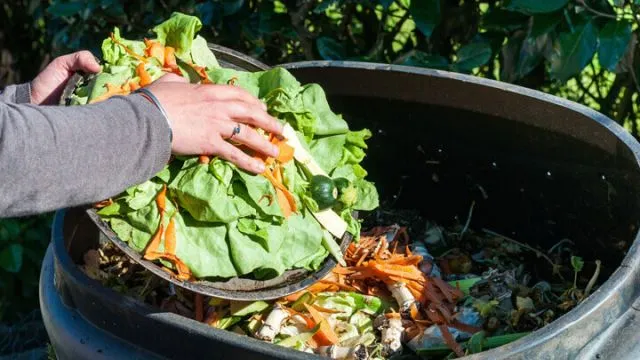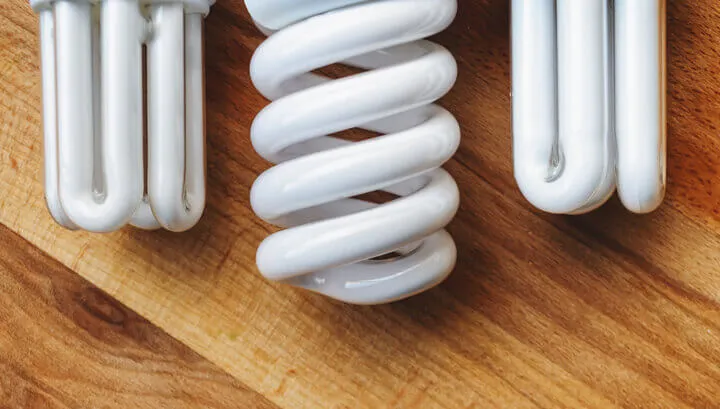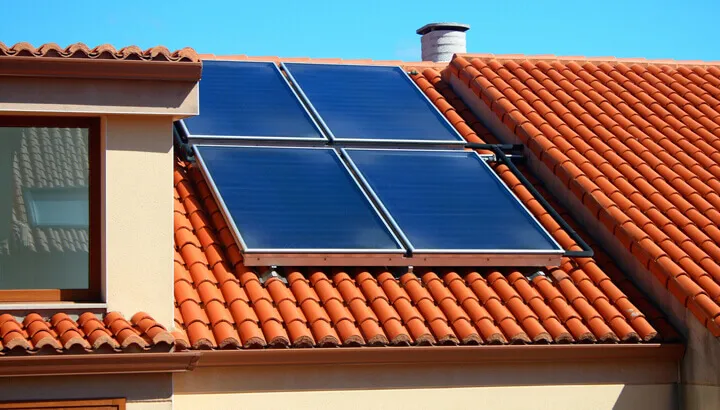
- Share on Facebook57
- Share on Pinterest
- Share on Twitter
Making a conscious effort to live a more sustainable life can feel like a daunting task. Thankfully, new advancements in technology and adaptations in the market have changed the game, allowing people to make easy and cost-efficient changes in their own homes, which will lower everyone’s carbon footprint.
Here’s a countdown of the top nine things you can do in your home to help reduce your impact on the planet.
9. Use energy efficient light bulbs

Save yourself some money and reduce your carbon footprint at the same time by upgrading to energy efficient light bulbs. Standard compact fluorescent bulbs (CFLs) use 75 percent less electricity than incandescent lights. While the energy efficient variety of light bulbs initially costs more than the alternative, you end up saving money thanks to how long these bulbs last.
8. Plug all electronic devices into a power bar
Your electronics all use up energy if they are plugged into an outlet, even when they are turned off. This is called “energy leak” and it unnecessarily increases your utility bills and prevents energy conservation.
Plugging all electronic appliances into a power bar and then turning the power bar off when not in use can prevent energy leaks. This doesn’t impact your ability to enjoy your devices in any way, it just prevents them from sucking up electricity when not in use.
7. Compost your waste
Composting is a great way to reduce the amount of waste that ends up in landfills while fertilizing your garden at the same time. By feeding your garden compost you are injecting it with a diverse range of nutrients and microorganisms that will improve the health of your plants and garden overall.
There are numerous options for composting and multiple ways this can be beneficial to your garden. The David Suzuki Foundation has an excellent pamphlet on all the composting do’s and don’ts that you will need to know before you begin.
6. Use a water-saving showerhead
Showering accounts for 17 percent of our residential water use, and a lot of that water is wasted. The average showerhead uses 2.5 gallons of water per minute (gpm) while a certified WaterSense showerhead uses a maximum of only 2.0 gpm.
Not only does the water-saving showerhead reduce water consumption but it also reduces energy demand by decreasing the amount of energy used to heat the water. The EPA estimates that a family that switches to a water-saving showerhead would save enough energy to power their home for 13 days.
5. Solar panels

Installing solar panels requires an investment, albeit a fairly safe one. The price for solar panels has reduced drastically in recent years, and depending on where you live they can be used to power your home or the energy they produce can be pumped into your local energy grid, supplying your neighbors with clean renewable energy generated from your rooftop.
Feed-In Tariff (FIT) programs pay homeowners for every kilowatt of energy produced by solar panels installed on their rooftops. While such programs are still in their infancy in the United States, they have been used with a great deal of success in Canada and Europe. The success of such programs has allowed expertise and efficiency in the solar industry to advance.
In the absence of such a program in your area, solar panels can be used to power appliances and heat water, allowing you to reduce your utility bills and reduce the amount of energy you use from unsustainable sources.
4. Energy efficient appliances
Depending on where you live you are most likely able to receive a government rebate or tax incentive for the purchase of new and energy efficient appliances. You name the appliance and there is most likely a government program that will pay you to purchase an energy efficient version.
Some of the appliances available for these programs include refrigerators, air conditioners, dishwashers, clothes washers, heating units, air purifiers and pretty much anything that plugs in and plays some type of useful role in your home.
More people using energy efficient appliances means less of a drain on our energy resources, supplying the government with the necessary motivation to fund these programs.
3. Insulate your home
Almost half of all energy used in a typical American home is used for heating or cooling. Proper insulation can cut that percentage to as little as 10 percent.
Some have expressed concern about the potential health impacts of polyurethane foam spray being used as insulation, but luckily many environmentally friendly alternatives are currently being investigated.
2. Purchase green power
Depending on where you live there may be a green energy retailer who can switch your home to clean renewable energy. In Toronto, Canada, Bullfrog Power has been providing homeowners with the option to switch to renewable energy sources since 2005, which has now spread across the country. The company generates power from wind, low-impact hydropower and natural gas.
In the United States, access to alternative energy retailers varies state by state. The U.S. Department of Energy has listings of alternative energy suppliers on its website.
1. Download a carbon footprint app
Finally, the most important step you can take to lower the environmental impact of your home is to measure, track and adjust your carbon footprint. After all, it’s hard to achieve goals without first tracking metrics and measuring progress.
There are a few apps available that can help you do this, but one of the most popular is Oroeco. The app calculates your footprint and compares your results to others in your area. You can make it a family goal to be the most sustainable home in your neighborhood!
So there you have it, nine ways to become an environmentalist in your own home. Did we leave anything out? Let us know!
— Ian Carey
- Share on Facebook57
- Share on Pinterest
- Share on Twitter

